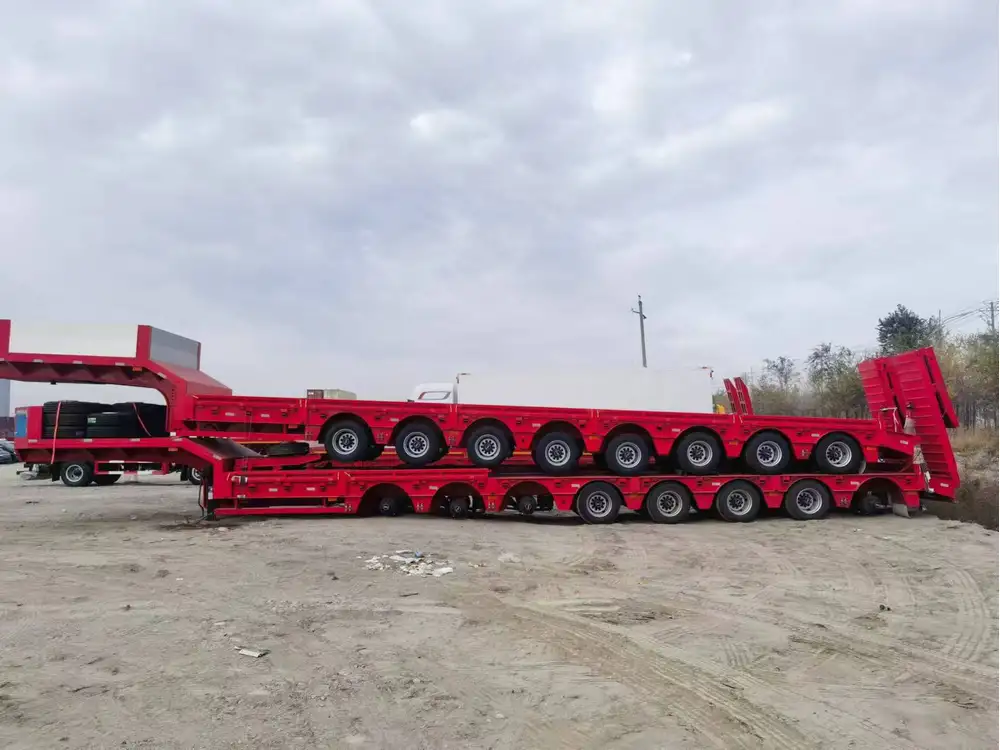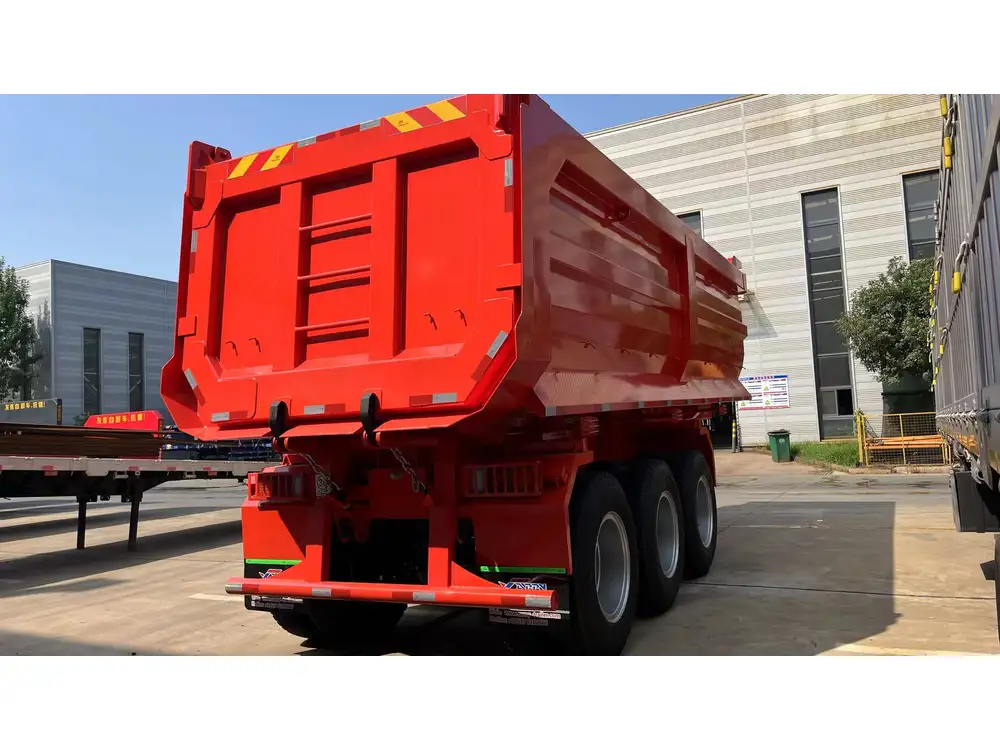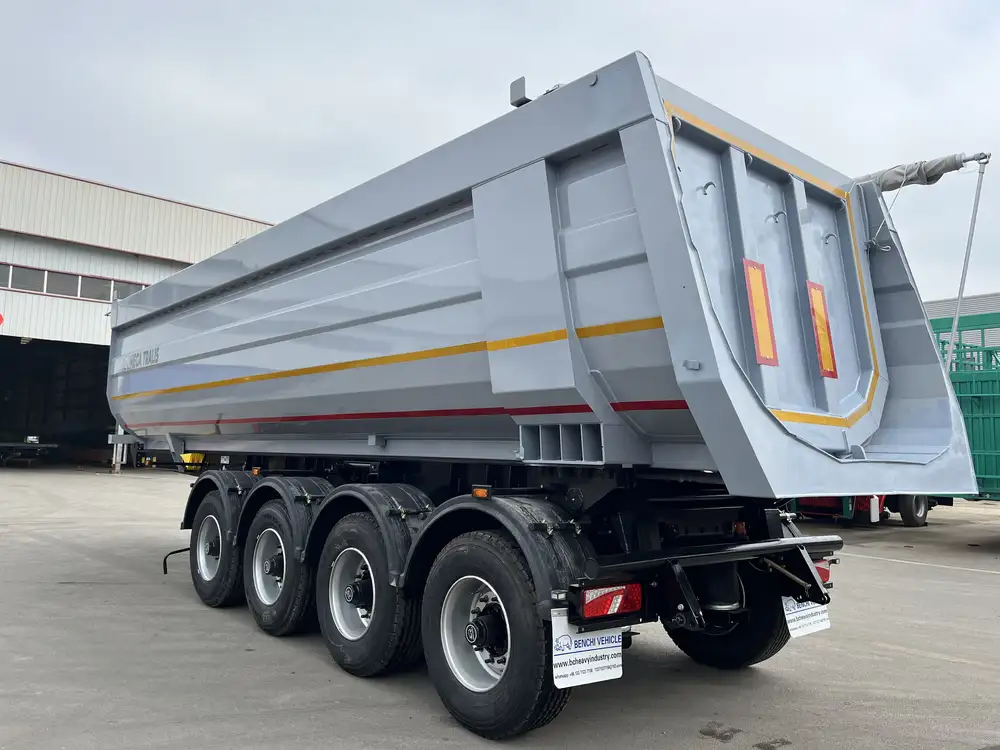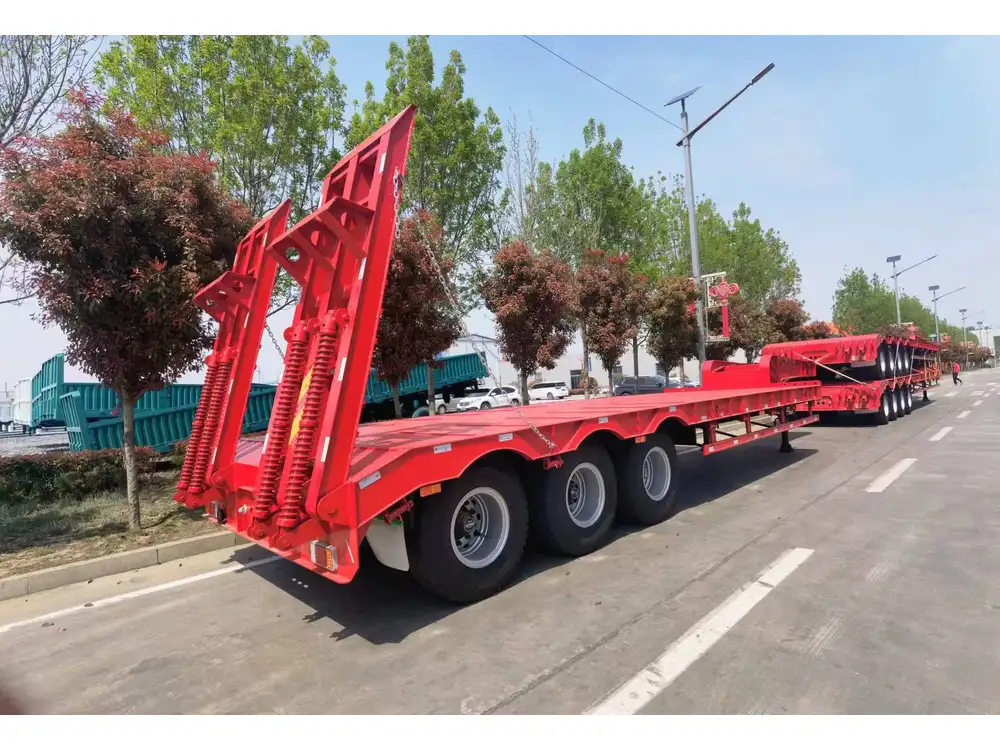In the ever-evolving world of transportation and logistics, the ability to move various cargo efficiently and safely is paramount to success. As manufacturers of semi-trailers, we understand the significance of articulating solutions to our customers’ uncertain questions, especially concerning the nuances of hauling specific types of vehicles. In this comprehensive guide, we’ll delve into the often-asked question: Can you haul a vehicle using a semi-trailer? We will dissect it into manageable sections to both clarify and educate.
Understanding Semi-Trailers
What is a Semi-Trailer?
A semi-trailer is a trailer without a front axle that is designed to be towed by a truck or a tractor unit. It relies on a fifth wheel mechanism connected to the towing vehicle. Semi-trailers come in various configurations, each tailored for specific transport needs, such as flatbeds, refrigerated trailers, or enclosed vans. Here’s a brief overview of the advantages of semi-trailers:
| Feature | Benefit |
|---|---|
| Versatile Configurations | Adaptable to various types of cargo |
| Increased Load Capacity | Hauls heavier and larger loads than conventional trailers |
| Enhanced Stability | Provides better weight distribution |
| Efficiency in Loading/Unloading | Facilitates quicker access and handling of goods |

Types of Semi-Trailers
When considering hauling a vehicle, it’s essential to choose the right type of semi-trailer to handle the load effectively. Below are the primary types and their suitability for vehicle transport:
| Type of Trailer | Description | Suitability for Vehicle Transport |
|---|---|---|
| Flatbed Semi-Trailer | No sides or roof, allowing for loading from every angle | Excellent for cars, trucks, and equipment |
| Enclosed Trailer | Provides protection against the weather and theft | Ideal for luxury vehicles or vintage cars |
| Car Carrier Semi-Trailer | Specifically designed for transporting multiple vehicles | Optimal for dealerships, auctions, and private transport |
| Lowboy Trailer | Low-profile design for transporting heavy equipment | Suitable for oversized vehicles and machinery |
Key Considerations for Hauling Vehicles
Weight Limitations
One of the foremost concerns when hauling a vehicle with a semi-trailer is adhering to weight restrictions imposed by regulatory authorities. Exceeding these limitations can lead to hefty fines, damage to roadways, and potential accidents. Each semi-trailer has a gross vehicle weight rating (GVWR), which dictates the maximum weight the trailer can legally carry. Ensure that you factor in the:
- Weight of the vehicle being transported
- Additional cargo weight (if applicable)
- Weight of the trailer itself
Tip: Consult local regulations and guidelines to determine your allowable weight for transport.

Dimensions and Sizes
Before your vehicle is loaded, it’s critical to measure its dimensions accurately. Consider the following:
- Length
- Width
- Height
Many semi-trailers have specific dimensions that must conform to local and state transportation regulations. For example, exceeding a height of 13′ 6” may require special permits.
Accessibility and Loading Process
The loading process can be tricky and should always be planned efficiently. Different types of trailers may require different loading practices.
- Flatbeds often demand ramps or cranes for accessibility.
- Enclosed trailers might require special loading gates.
- Car haulers typically come equipped with hydraulic lifts.
Careful attention to ramps and loading angles is crucial. You should also have sufficient guidance from ground personnel to ensure a smooth loading experience.
Securing the Load
Securing the vehicle is a crucial aspect of hauling. Proper tie-down techniques will ensure that the vehicle doesn’t shift during transport. Utilize:
- Ratcheting straps for optimal tension
- Chains and binders for heavy-duty loads
- Wheel chocks to prevent lateral movement
Make sure to inspect securing mechanisms before and during transit. Periodic checks during long hauls are essential to avoid incidents.

Insurance and Liabilities
Carrying the right insurance coverage when hauling vehicles is non-negotiable. Factors to consider include:
- Liability insurance, which covers potential damage to other vehicles or property
- Cargo insurance, which protects against damage to the vehicle being towed
Ensure you are familiar with the terms and conditions of your insurance policy to avoid complications.
Pros and Cons of Using Semi-Trailers for Vehicle Transport
Advantages
- Cost-Effectiveness: Using a semi-trailer can be less expensive in terms of fuel efficiency per ton-mile when transporting vehicles over long distances.
- Versatility: The ability to carry multiple vehicles simultaneously can result in better profitability for businesses.
- Road Ready: Semi-trailers are designed for highway stability, enabling smoother transport across various terrains.

Disadvantages
- Longer Loading Times: Depending on the type of trailer, the loading process can be time-consuming.
- Regulatory Compliance: Extensive regulations apply to weight and width limits, which may vary from jurisdiction to jurisdiction.
- Maintenance and Upkeep: Regular inspections and maintenance of the vehicle, trailer, and securing apparatus are required for safety.
Alternatives to Consider
While semi-trailers are a viable solution for transporting vehicles, they are not the only option. Alternatives include:
- Enclosed Car Trailers: Protect the vehicle from the elements and theft and are suitable for high-value vehicles.
- Tow Trucks: Ideal for short-distance transport, offering flexibility and quick response times.
- Transport Services: For more peace of mind, using a dedicated vehicle transport service can save time and ensure professionalism.
| Option | When to Use | Considerations |
|---|---|---|
| Semi-Trailer | Long distances with multiple vehicles | Requires permits and weight checks |
| Enclosed Car Trailers | High-value vehicles or vintage cars | Potentially higher costs |
| Tow Trucks | Local, urgent transport needs | May only carry one vehicle |
| Professional Transport Services | When convenience and safety are paramount | Cost may vary significantly |
Commonly Asked Questions

1. Can Any Vehicle Be Hauled on a Semi-Trailer?
Not every type of vehicle is suitable for transportation on a semi-trailer. It’s essential to assess the vehicle’s size, weight, and any special handling requirements. For example, oversized vehicles may need a specialized lowboy trailer to accommodate their height and weight specifications.
2. Do I Need Special Permits?
Regulations vary widely by state and locality, so determining the need for permits is crucial. Generally, if your transport exceeds standard dimensions or weight limits, permit acquisition will be necessary. Always check with your local Department of Transportation (DoT).
3. What Happens If My Vehicle Sustains Damage During Transport?
Insurance plays a significant role in covering any unforeseen circumstances or damages. Your liability and cargo insurance should ideally cover damages incurred during transport. Always document the condition of the vehicles before and after transport to serve as proof in case of disputes.

4. How Can I Minimize Risks During Transit?
Risk can be mitigated through proper load securing practices, regular maintenance checks, training staff in loading/unloading procedures, and utilizing technology such as GPS tracking for real-time updates.
5. Is It Worth Investing in a Semi-Trailer for Vehicle Transport?
If your business frequently involves transporting vehicles, investing in a semi-trailer can prove beneficial in the long run due to cost savings and increased capacity. Additionally, it opens the door to partnerships with automotive dealers and transport services.
Conclusion: Making Informed Choices
Navigating the logistics of hauling vehicles with a semi-trailer is a multifaceted task that requires attention to detail, critical planning, and adherence to regulations. Vehicle transport remains an integral aspect of many industries, and selecting the right equipment can greatly enhance efficiency and profitability.
Whether you’re a transportation manager, a dealership owner, or a logistics planner, understanding the intricacies of semi-trailer usage for hauling vehicles can empower you to make informed decisions. Utilize this guide as a foundation for your transport strategies, and always stay updated on industry standards and innovations to foster successful outcomes in your logistics endeavors.



